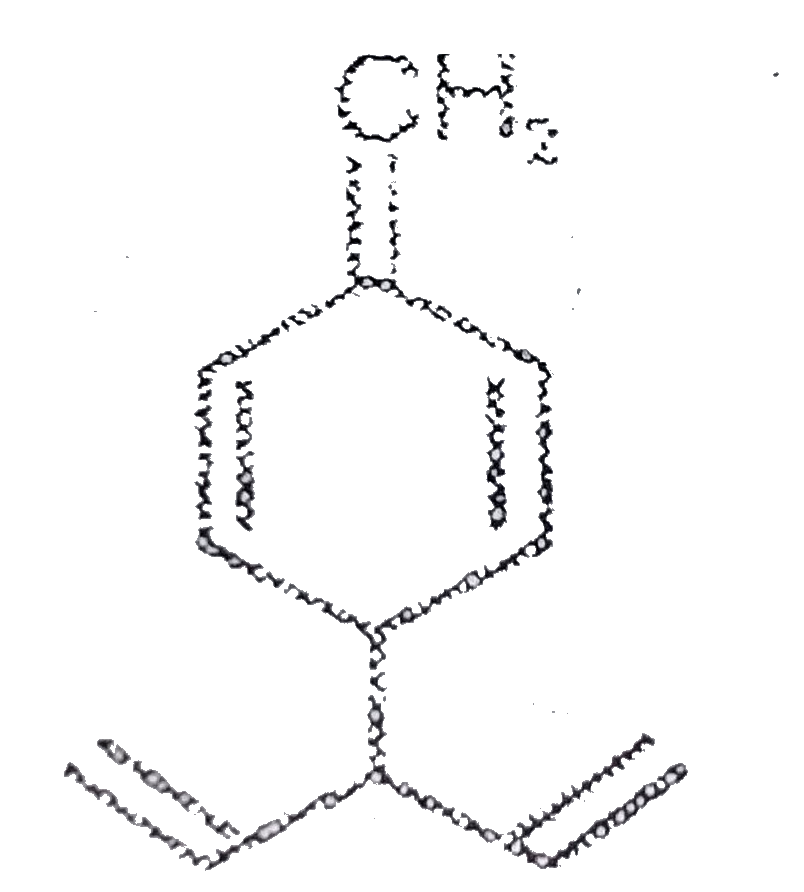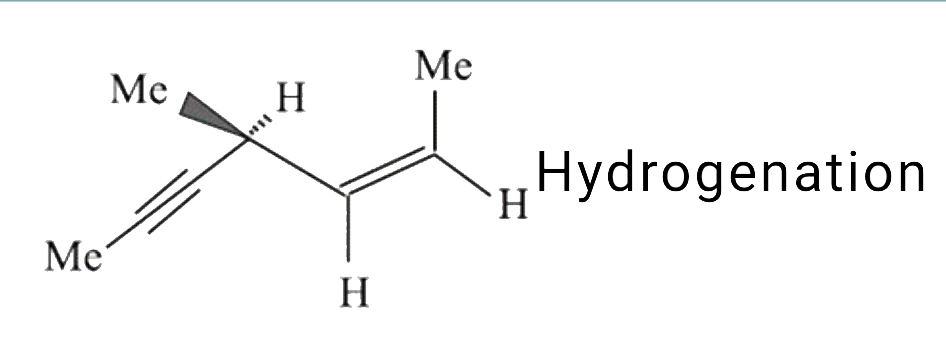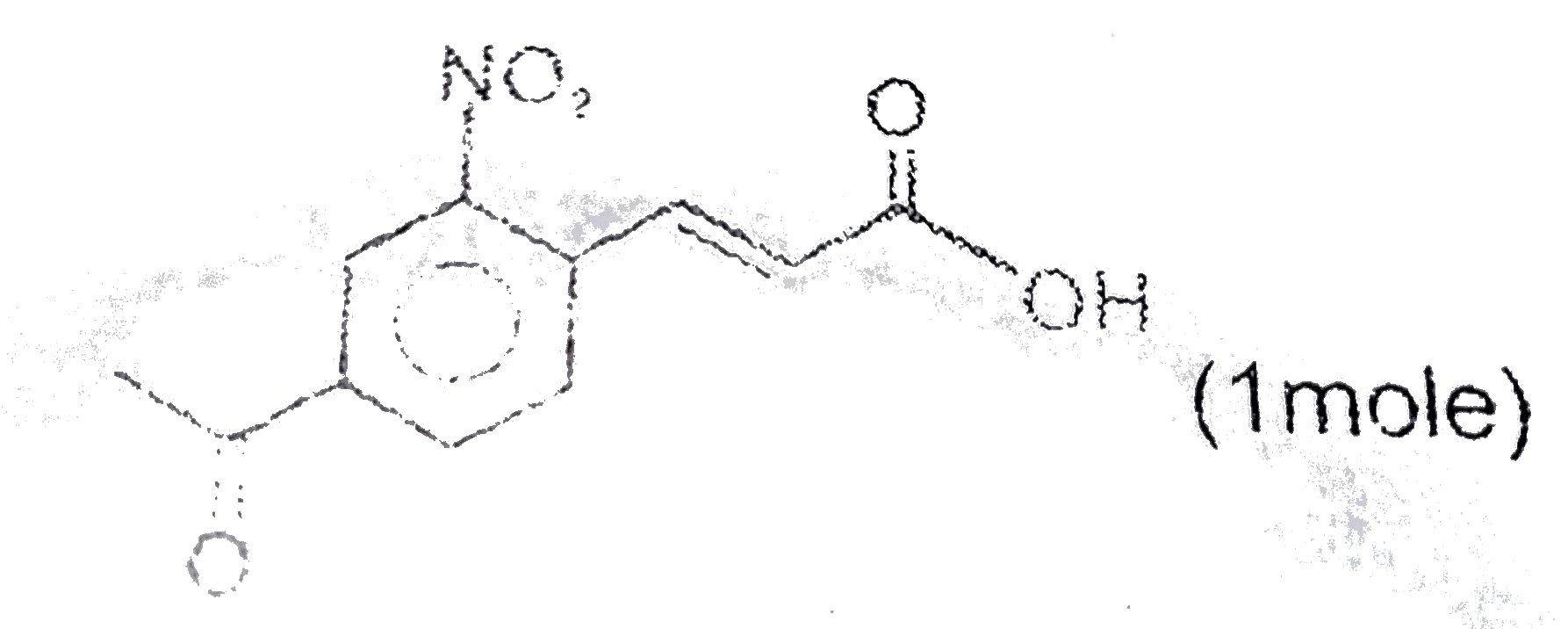An alkyl halide C5H11 (A) reacts with ethanolic KOH to give an alkene 'B' which reacts with Br2 to give a compound 'C' which on dehydromination gives an alkyne 'D' . On treatment with sodium metal in liquid ammonia one mole of 'D' give one mole of the sodium salt of 'D' and half a mole of hydrogen gas . Complete hydrogenation of 'D' yields a straight chain alkane. Identify A, B, C and D . Give the the reactions involved.
To solve the problem, we need to identify the compounds A, B, C, and D based on the given reactions and molecular formulas. Let's break it down step by step.
Step 1: Identify Compound A
- Given: An alkyl halide with the formula C5H11X.
- Structure of A: This compound can be a straight-chain or branched alkyl halide. For simplicity, let's consider it as 1-bromopentane (C5H11Br).
Step 2: Reaction of A with Ethanolic KOH
- Reaction: C5H11Br+KOH(ethanolic)→C5H10+HBr
- Type of Reaction: This is an elimination reaction where KOH acts as a base, leading to the formation of an alkene (B) by the elimination of HBr.
- Identify Compound B: The product is an alkene with the formula C5H10. A possible structure for B is 1-pentene (CH2=CH-CH2-CH2-CH3).
Step 3: Reaction of B with Br2
- Reaction: C5H10+Br2→C5H10Br2
- Type of Reaction: This is an addition reaction where bromine adds across the double bond of the alkene.
- Identify Compound C: The product is a dibromide with the formula C5H10Br2. A possible structure for C is 1,2-dibromopentane.
Step 4: Dehydrobromination of C
- Reaction: C5H10Br2+KOH(ethanolic)→C5H8+2HBr
- Type of Reaction: This is another elimination reaction where the bromine atoms are removed, leading to the formation of an alkyne (D).
- Identify Compound D: The product is an alkyne with the formula C5H8. A possible structure for D is 1-pentyne (C≡C-CH2-CH2-CH3).
Step 5: Reaction of D with Sodium in Liquid Ammonia
- Reaction: C5H8+Na→C5H7Na+0.5H2
- Type of Reaction: This is a reduction reaction where sodium reduces the alkyne to form the sodium salt of the alkyne and hydrogen gas.
- Identify the Sodium Salt: The sodium salt formed is sodium 1-pentynide (C5H7Na).
Step 6: Complete Hydrogenation of D
- Reaction: C5H8+H2→C5H12
- Type of Reaction: This is a hydrogenation reaction where the alkyne is fully hydrogenated to form a straight-chain alkane.
- Identify the Alkane: The product is pentane (C5H12).
Summary of Compounds
- A: 1-bromopentane (C5H11Br)
- B: 1-pentene (C5H10)
- C: 1,2-dibromopentane (C5H10Br2)
- D: 1-pentyne (C5H8)
Reactions Involved
1. A to B: C5H11Br+KOH(ethanolic)→C5H10+HBr
2. B to C: C5H10+Br2→C5H10Br2
3. C to D: C5H10Br2+KOH(ethanolic)→C5H8+2HBr
4. D with Sodium: C5H8+Na→C5H7Na+0.5H2
5. Hydrogenation of D: C5H8+H2→C5H12
- Given: An alkyl halide with the formula C5H11X.
- Structure of A: This compound can be a straight-chain or branched alkyl halide. For simplicity, let's consider it as 1-bromopentane (C5H11Br).
- Reaction: C5H11Br+KOH(ethanolic)→C5H10+HBr
- Type of Reaction: This is an elimination reaction where KOH acts as a base, leading to the formation of an alkene (B) by the elimination of HBr.
- Identify Compound B: The product is an alkene with the formula C5H10. A possible structure for B is 1-pentene (CH2=CH-CH2-CH2-CH3).
- Reaction: C5H10+Br2→C5H10Br2
- Type of Reaction: This is an addition reaction where bromine adds across the double bond of the alkene.
- Identify Compound C: The product is a dibromide with the formula C5H10Br2. A possible structure for C is 1,2-dibromopentane.
- Reaction: C5H10Br2+KOH(ethanolic)→C5H8+2HBr
- Type of Reaction: This is another elimination reaction where the bromine atoms are removed, leading to the formation of an alkyne (D).
- Identify Compound D: The product is an alkyne with the formula C5H8. A possible structure for D is 1-pentyne (C≡C-CH2-CH2-CH3).
- Reaction: C5H8+Na→C5H7Na+0.5H2
- Type of Reaction: This is a reduction reaction where sodium reduces the alkyne to form the sodium salt of the alkyne and hydrogen gas.
- Identify the Sodium Salt: The sodium salt formed is sodium 1-pentynide (C5H7Na).
- Reaction: C5H8+H2→C5H12
- Type of Reaction: This is a hydrogenation reaction where the alkyne is fully hydrogenated to form a straight-chain alkane.
- Identify the Alkane: The product is pentane (C5H12).
- A: 1-bromopentane (C5H11Br)
- B: 1-pentene (C5H10)
- C: 1,2-dibromopentane (C5H10Br2)
- D: 1-pentyne (C5H8)
1. A to B: C5H11Br+KOH(ethanolic)→C5H10+HBr
2. B to C: C5H10+Br2→C5H10Br2
3. C to D: C5H10Br2+KOH(ethanolic)→C5H8+2HBr
4. D with Sodium: C5H8+Na→C5H7Na+0.5H2
5. Hydrogenation of D: C5H8+H2→C5H12
Topper's Solved these Questions
- HYDROCARBONSBook:NCERT EXEMPLAR ENGLISHChapter:HYDROCARBONSExercise:Assertion and Reason
Explore 4 Videos
- ENVIRONMENTAL CHEMISTRYBook:NCERT EXEMPLAR ENGLISHChapter:ENVIRONMENTAL CHEMISTRYExercise:Long Answer Type
Explore 5 Videos
- HYDROGENBook:NCERT EXEMPLAR ENGLISHChapter:HYDROGENExercise:LONG ANSWER TYPE QUESTIONS
Explore 8 Videos
Similar Questions
Knowledge Check
An halide C5H11Br on treatment with alc. KOH give 2-pentene only. The halide will be :
ACH3−CH2−CH2−CH2−CH2−BrBCH3−CH3−CH2−C∣BrH−CH3CCH3−CH2−C∣BrH−CH2−CH3DCH3−CH3∣CH−C∣Br−CH3Primary alkyl halide C4H9Br (X) reacts with alc. KOH to give compound (Y). (Y) reacts with HBr to give compound (Z) which is an isomer of (X). When (X) reacts with Na metal it gives compound (P). (X), (Y), (Z) and (P) are
A X Y Z PCH3−CH∣CH3−CH2BrCH3−C∣CH3=CH2CH3−Br∣C∣CH3−CH3C8P18B X Y Z PCH3CH2CH2CH2BrCH3CH=CHCH3CH3−CH∣Br−CH2CH3C5H10C X Y Z PCH3−CH∣Br−CH2CH3CH3CH=CHCH3CH3CH2CH2CH2BrC7H14D X Y Z PCH3−CH∣CH3−CH2BrCH3CH=CHCH3CH3−CH∣Br−CH2CH3C6H12
Number of moles of hydrogen will required for complete hydrogenation of one mole of following compounds :

View SolutionThe alkyl halide C4H9Br(A) reacts with alcoholic KOH and gives an alkene (B) which reacts with bromine to give a dibromide (C). (C) is transformed with sodamide into a gas (D) which forms a precipitate when passed through ammoniacal silver nitrate solution. Give the structural formulae of the compounds (A), (B), (C) and (D) and explain the reactions involved.
View SolutionA compound (A) of boron react with NMe3 to give an adduct (B) which in hydrolysis gives a compound (C) and hydrogen gas. Compound (C) is an acid. Indenfity the compounds A,B and C. Give the reactions involved.
View SolutionWhen metal reacts with O2 it forms black solid which on reacting with Hydrogen gives back metal. Identify metal.
View SolutionAn alkali metal A gives a compound B (molecular mass = 40) on reacting with water. The compound B gives a soluble compound C on treatment with aluminium oxide. Identify A, B and C and give the reactions involved.
View SolutionOne mole of alkene an ozonolysis gives two moles of butanone. The alkene is :
View Solution

 Hydrogenation of the above compound in the presence of sodium in liquid ammonia gives -
Hydrogenation of the above compound in the presence of sodium in liquid ammonia gives - 